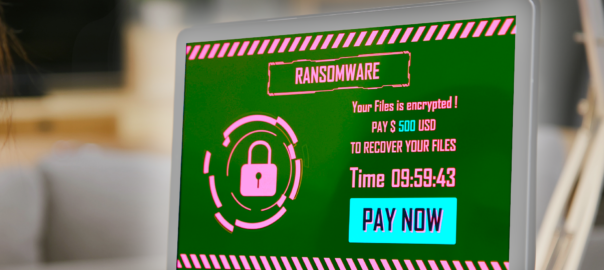Artificial intelligence has evolved dramatically, and the improvements are evident. In one of its first applications, AI was used to develop a checkers program. It was a monumental achievement at the time but seems so simplistic compared to today’s AI applications. AI is an everyday tool behind many ordinary things like virtual assistants, autonomous vehicles, and chatbots. Because of this AI is now used against your employees if they are not aware.
The Dark Side of Artificial Intelligence (AI)
AI has become so advanced that it is often difficult to fathom whether something is real or AI-generated. When you attempt to distinguish between real photos taken by your friend and those produced by an AI photo app, it can be quite amusing. However, this could turn dangerous, especially when hackers use it to target employees. The goal is to infiltrate a company’s system or steal confidential data. And what’s alarming is that there are several ways that this can be done.
Using AI Chatbots for Phishing Campaigns Against Employees
There used to be a time when phishing emails were easily distinguishable because of their glaring grammatical errors or misplaced punctuation marks. But with AI-powered chatbots, hackers can now generate almost flawlessly written phishing emails. Not only that, but these messages can also be personalized, making it more likely for the recipient to fall victim, as they won’t suspect that the email is fake.
CEO Fraud and Executive Phishing
This is not an entirely new method of social engineering. However, it has had a much higher success rate since generative AI tools emerged, making the phishing campaign more effective. In this type of phishing attack, hackers send out emails that look like they came from the CEO or some other high-ranking official. Most employees will not question this type of authority, especially since the message looks authentic, complete with logos and signatures.
Using AI Deepfake to Create Deceptive Videos Against Employees
Many people are aware by now that emails can easily be faked. With the prevalence of phishing scams and similar cyberattacks, we now tend to be more vigilant when reading through our inboxes. But videos are a different thing. As the saying goes, to see is to believe. If there is a video, it must be real. There is no need to verify because it is in front of your eyes, so they would willingly volunteer sensitive information, grant unauthorized access, or whatnot. However many employees don’t realize that AI is so advanced that even these videos can now be fabricated using Deepfake technology.
What You Can Do To Keep Your Employees and Your Business Safe
Hackers are taking advantage of AI technology to execute their attacks. We can only expect these strategies to become even more aggressive as AI continues to advance. But at the same time, there are steps you can take to increase safety for your business and your employees.
AI Cybersecurity Training for Employees
Awareness is key to mitigating the risks brought by AI-based attacks. With regular cybersecurity training, you can maintain employee awareness, help them understand how AI attacks work, and equip them with the knowledge to pinpoint red flags in suspicious emails.
Limit Access to Sensitive Information
Employees should always be on a need-to-know basis with the company’s sensitive information to minimize the damage in the event of a data breach. The less they know, the less the cybercriminals can get out of them.
Use AI-Powered Security Solutions
When it comes to AI, two can play the game. Cybercriminals may use AI to penetrate your system, but you can also use AI to detect such threats from a mile away. The important thing is to stay a couple of steps ahead of the enemy by ensuring that experts equip your security system with the most advanced AI tools to protect your organization and your employees.
Partner with an AI Security Expert
There is a plethora of AI tools widely available to anyone, and many of these are even free. But if you want to have the most secure system possible, we strongly recommend that you seek the help of experts in AI technologies. They can give you access to the most advanced AI tools and systems. On top of that, they can customize security strategies to align with your goals.
To learn more about what you can do, watch our on-demand webinar or download our Cybersecurity E-book.
AI technology has become so powerful that it can sometimes be scary. But with the right security solutions in place, your business and your employees can stay safe. If you are ready to take the step towards higher security and more robust protective measures, let us know. We will hook you up with an expert MSP fully capable of catering to your security needs.



